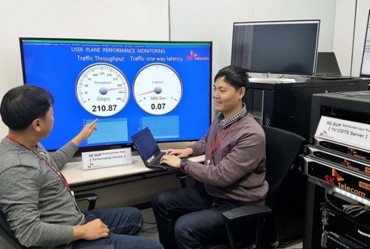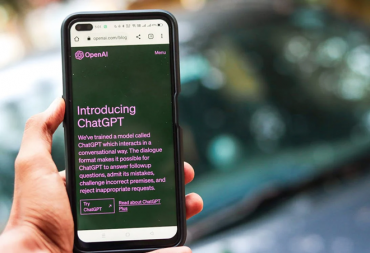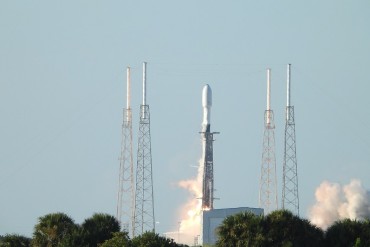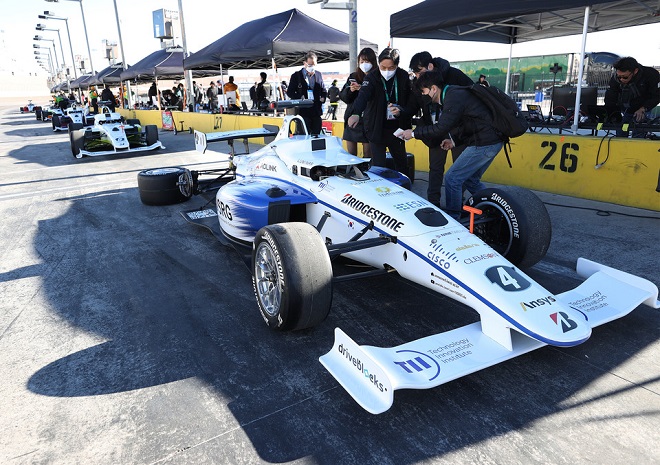
Team KAIST’s racing car is shown in this photo taken at the Las Vegas Motor Speedway during the Autonomous Challenge @ CES 2022 on Jan. 8, 2022. (Yonhap)
SEOUL, Dec. 27 (Korea Bizwire) — As the annual Consumer Electronics Show (CES) is slated to open in Las Vegas next week, a South Korean team is gearing up for an attention-grabbing autonomous driving competition.
“It is very meaningful to participate in the event and try to solve technological challenges of making autonomous driving cars faster and safer,” Shim Hyun-chul, a professor who leads Team KAIST, told Yonhap News Agency via phone on Monday.
Shim’s team, consisting of a handful of graduate students from the lab named Unmanned Systems Research Group, finished fourth at the CES version of the Indy Autonomous Challenge (IAC) in January, a prized competition aimed at engaging university students from around the world to develop complicated software for autonomous driving and advancing relevant technologies.
The IAC will make its third return to the global tech show to “push the boundaries of head-to-head autonomous racing and showcase the future of autonomous mobility,” the organizer said.
Team KAIST designed the algorithm to control the race car, the Dallara-built AV-21, which can reach a speed of up to 280 kph, and make it safely drive around the track at high speed without crashing.
Shim’s lab has been working on the development of autonomous aerial and ground vehicles for more than 10 years. In 2017, a self-driving car developed by the lab was certified by the South Korean government to run on public roads.
“When I did a study into autonomous driving more than 10 years ago, I did it absolutely from scratch,” Shim said of the difficulties of his research at early stages and lack of resources and interest in the field at that time.
“In the beginning, I had to write almost every code by myself,” he said.
Comparing then to now, it became much easier, as “many of them are in public domain and easily available, so you can just use it,” he said.
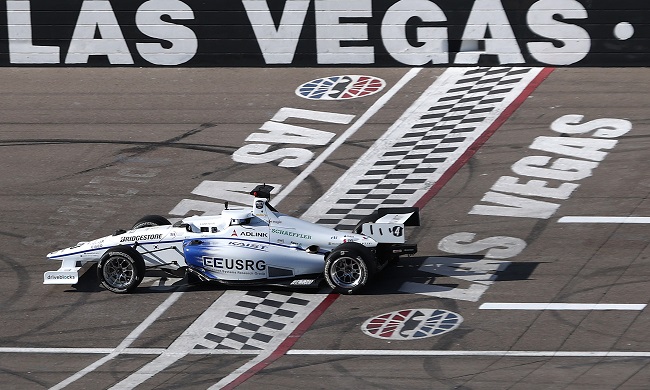
A self-driving race car with the algorithm designed by a Korea Advanced Institute of Science and Technology (KAIST) team speeds up on the track of the Las Vegas Motor Speedway in Las Vegas, Nevada, on Jan. 7, 2022. (Yonhap)
While the good result at CES 2022 did bring a lot of attention to the team and led to a talk with a major motor company over potential financial aid, he said the attention was “short-lived” and the suggested sum of the aid was too small to make a big impact.
Putting more resources and financial support into the sector in a sustained manner would be much helpful, he said, to make a leap in the high-tech industry that is sure to become the future of driving.
The event is slated to take place at the Las Vegas Motor Speedway on Jan. 7.
(Yonhap)



